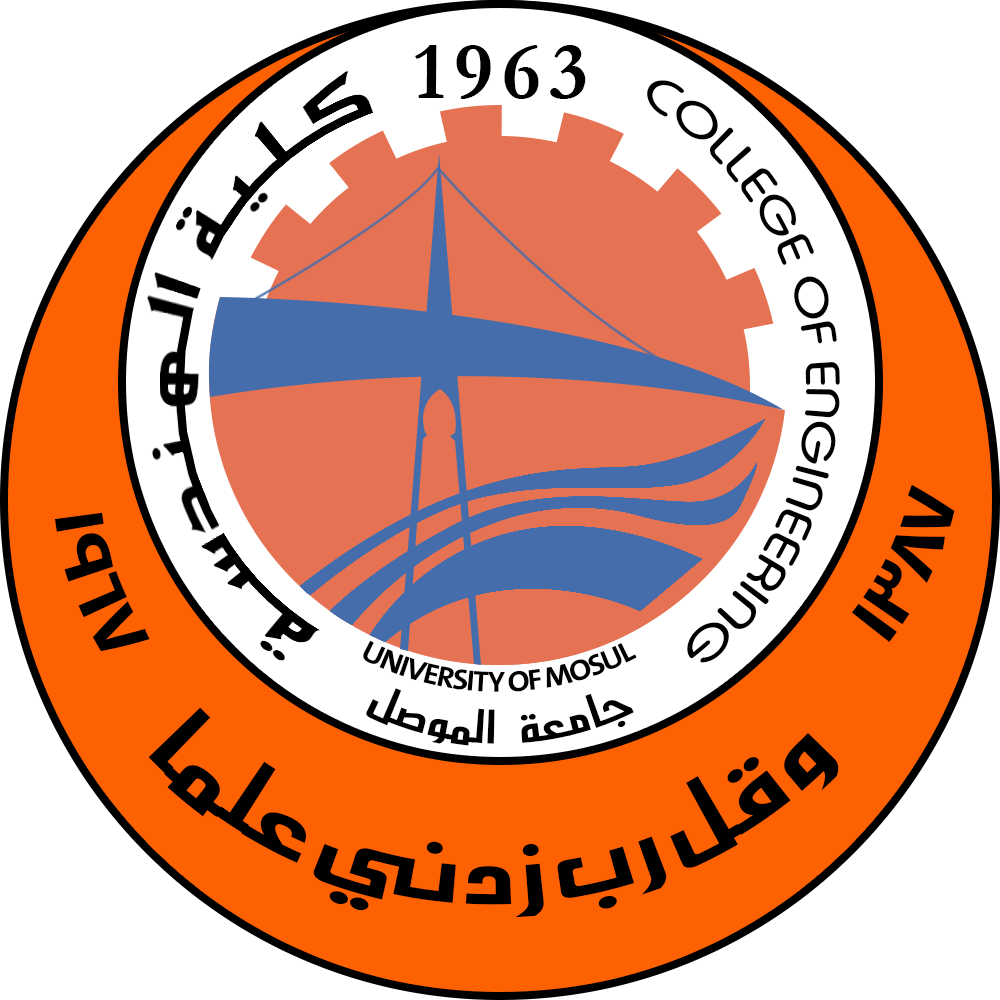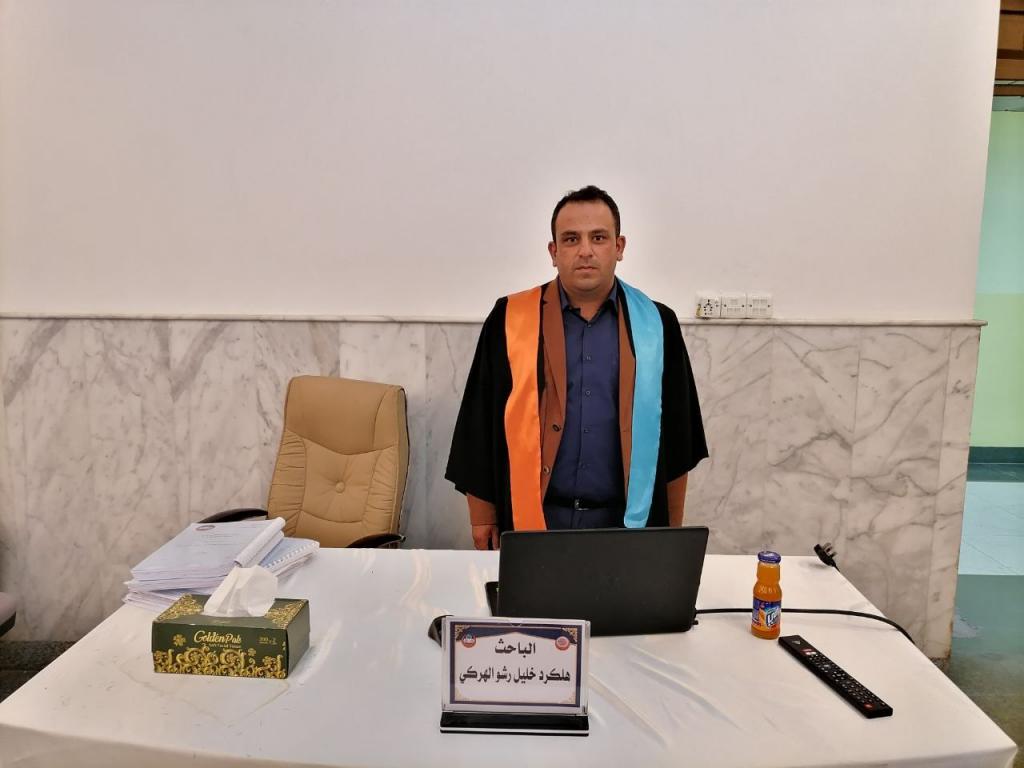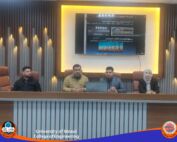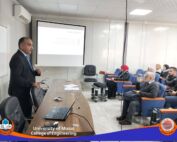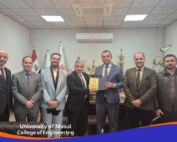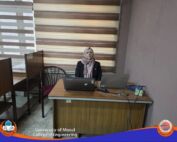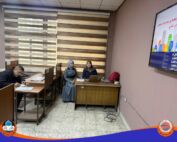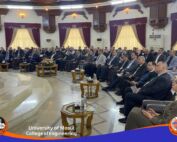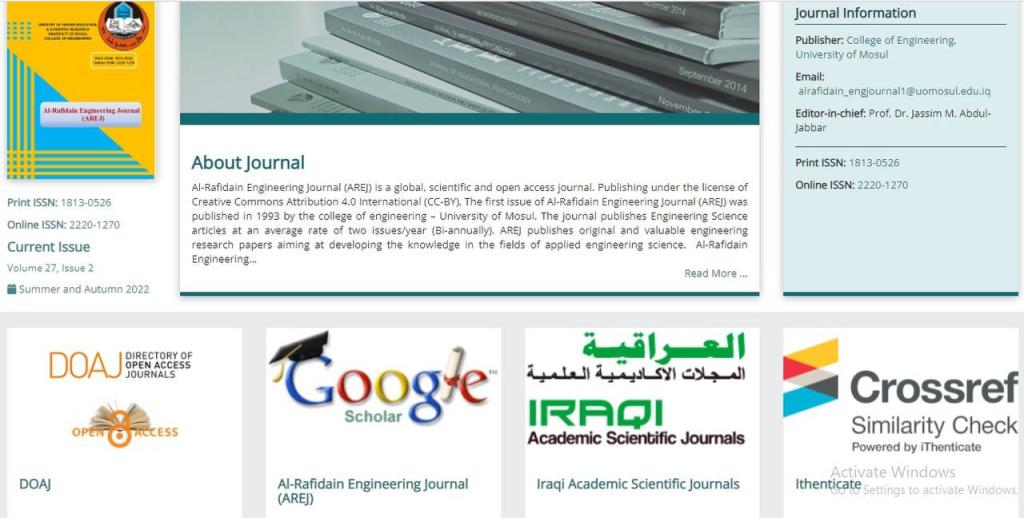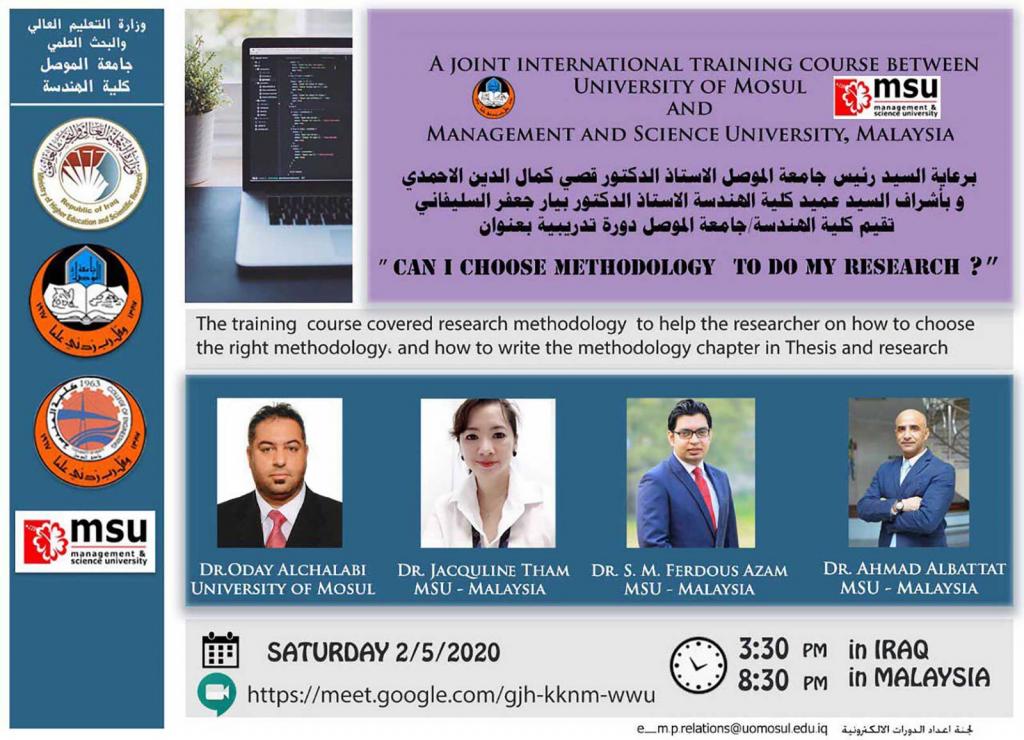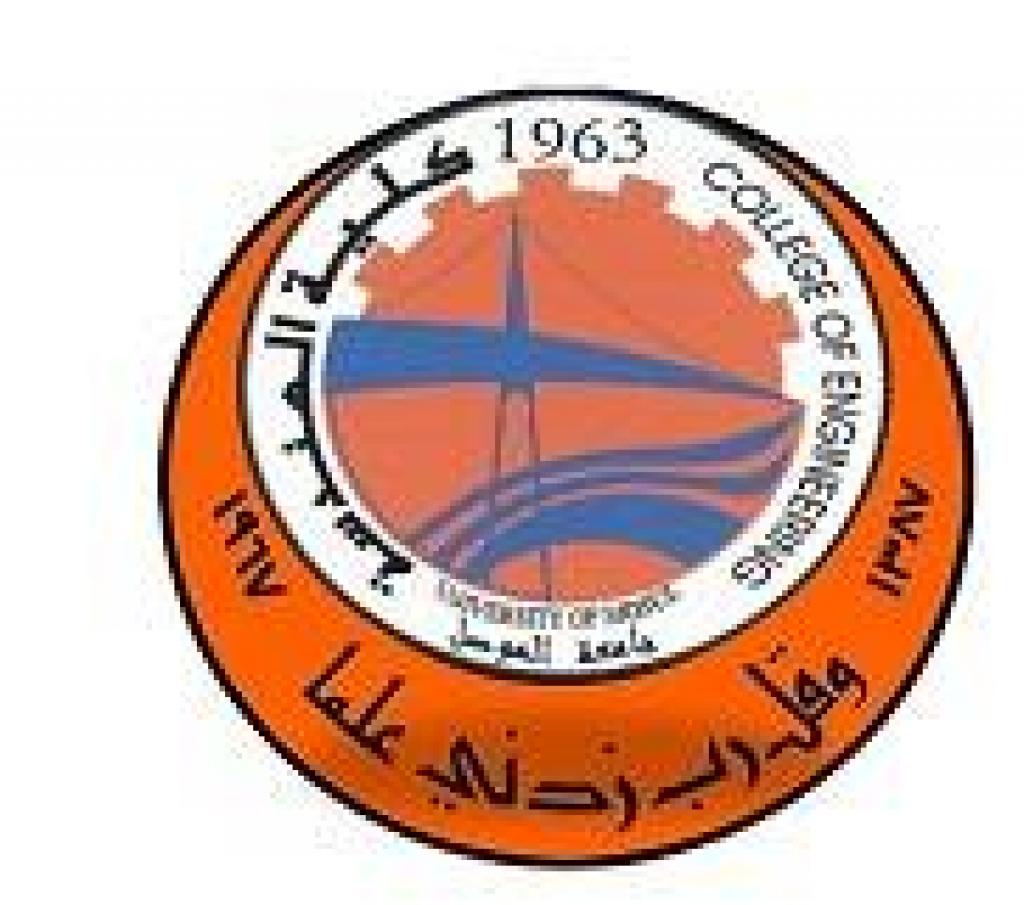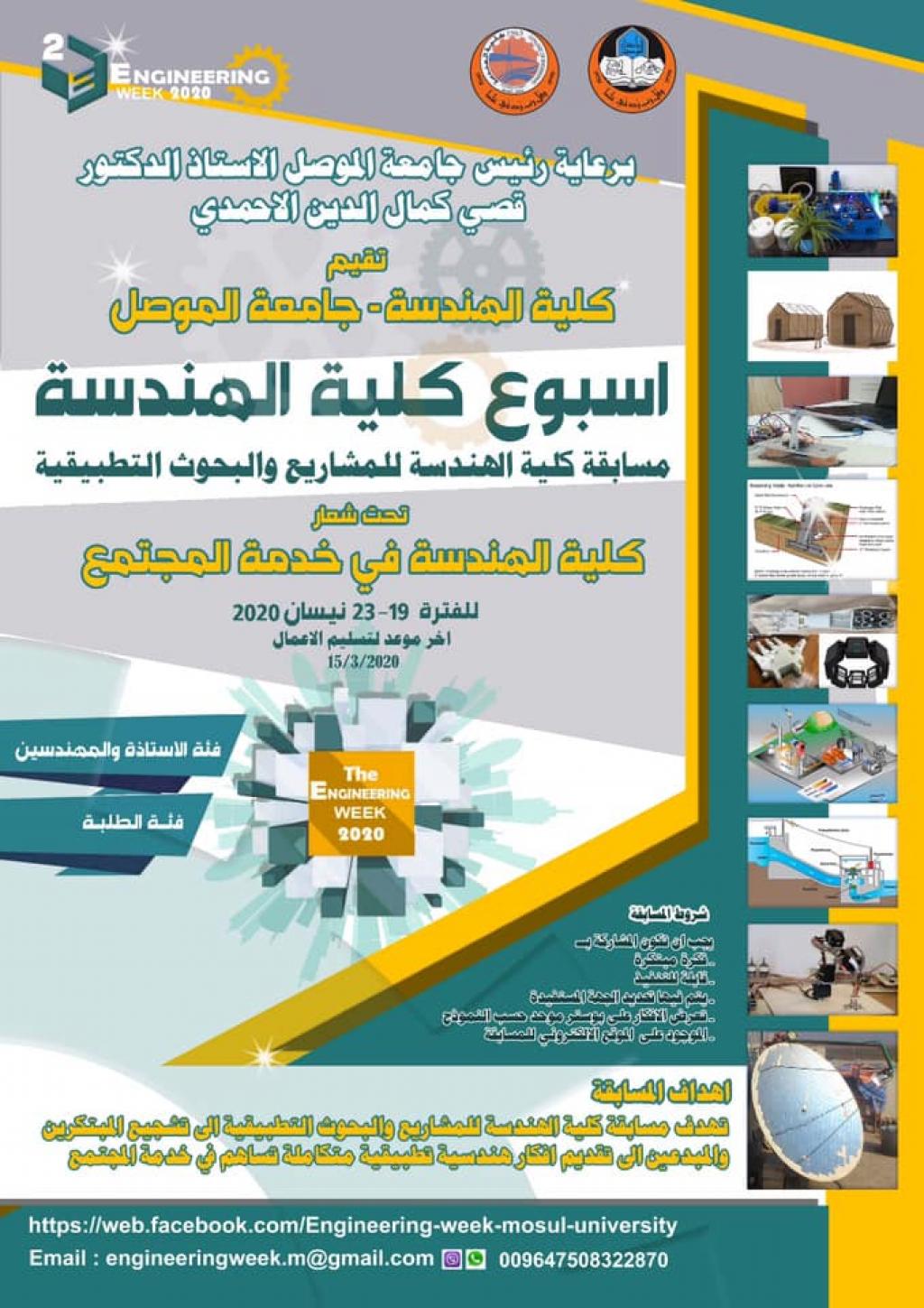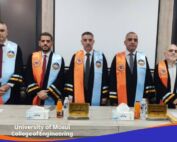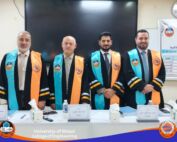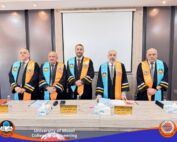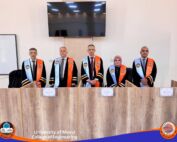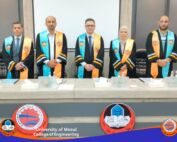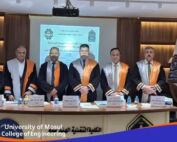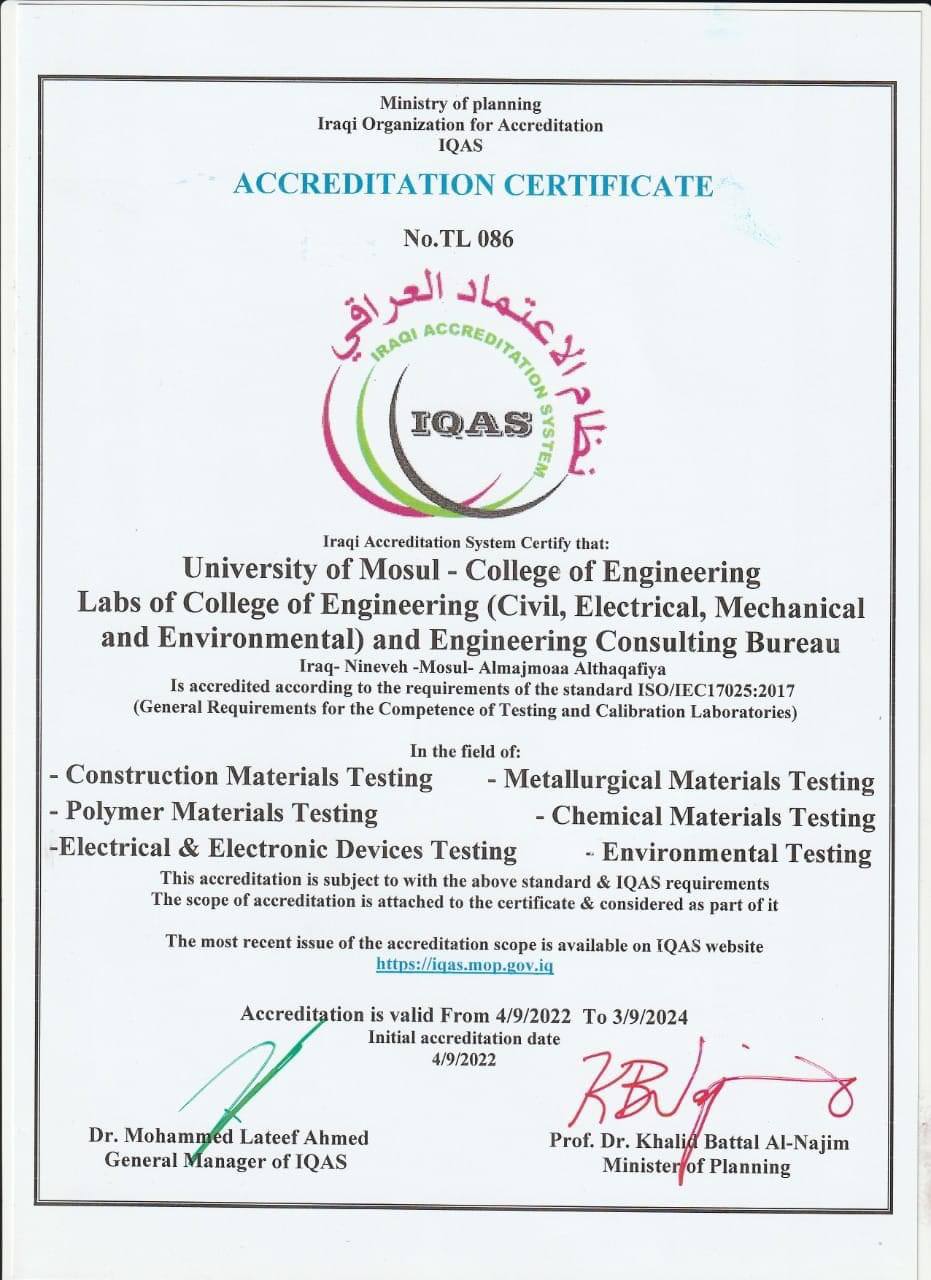3 July، 2022
Higher Diploma Research on “Optimum Design to Support The Soil Excavation in Old Mosul City”
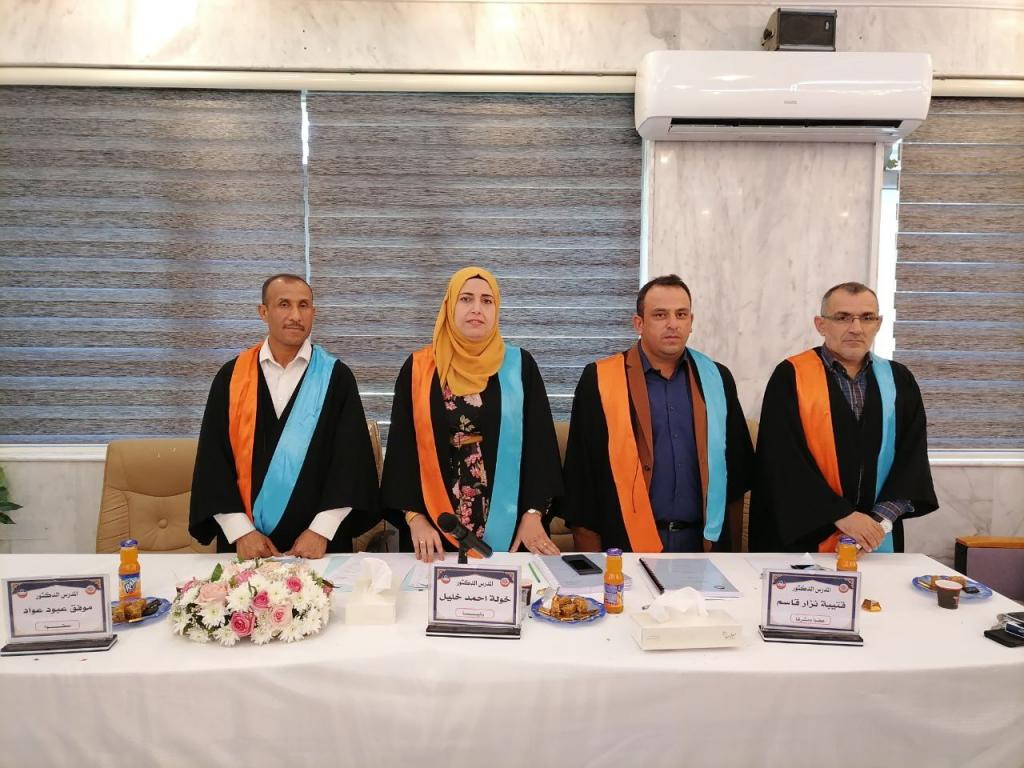
A Higher Diploma Research was discussed in Department of Civil Engineering / College of Engineering at University of Mosul entitled “Optimum Design to Support The Soil Excavation in Old Mosul City” submitted by (Helgard Khalil Rashu Alherki), Supervised By(Dr.Qutayba Nazar Alsaffar)on Wednesday, June 29, 2022.The research aims to reach the optimal design for the support of earthen excavations, as it included the study of the retaining walls and Sheet piles in terms of analysis and design using ready-made programs, and comparing the results with the internationally approved equations in terms of safety coefficients for both overturning, sliding and soil bearing capacity.It was noted through this study that the optimum design of the retaining walls can be adopted depending on the value of the safety factor of bearing capacity (3) as a critical optimum design that gives the least section (dimensions) of the wall and achieves all the factors of stability and at the lowest possible cost.It was also noted that the optimal design for the base of the retaining wall takes the minimum value of the design hypothesis proportional dimensioning (0.5 H), and until reaching the retaining walls with a height equal to or more than 7 m, then this value begins to rise continuously, indicating the increase in economic cost, and the thickness of the wall (Steam), it needs to be more than the minimum value (0.3 m) when the height of the retaining wall is more than 6 m.The burial (embedment) depth of the sheet pile in the example under study in the old Mosul area is half of the total pile length for all earthwork works in those areas.An economic comparative study was conducted to support earthen excavations for two types of supporting structures, and this study concluded that in general, the cost of supporting earthen excavations using cantilever retaining walls is less than the cost of supporting earthen excavations using sheet piles, but the latter remains commonly used, especially in areas that contain Soils with low bearing capacity, including the soil under study (the soil of the old Mosul area).
